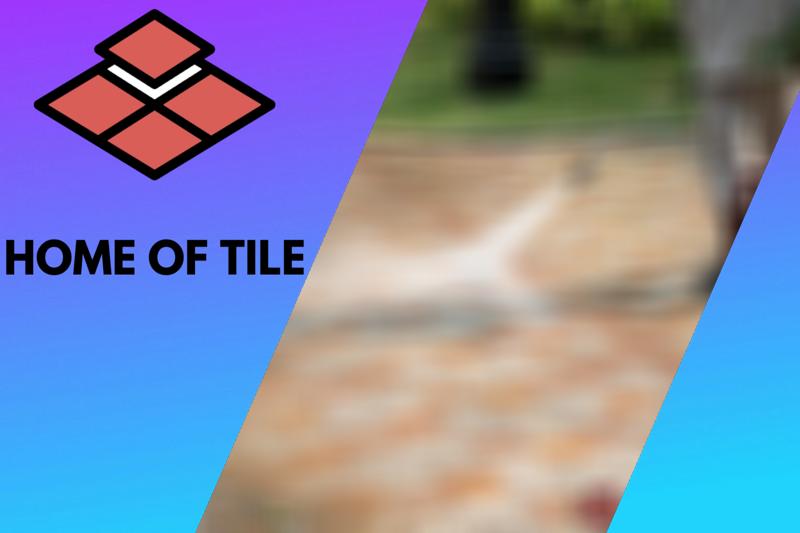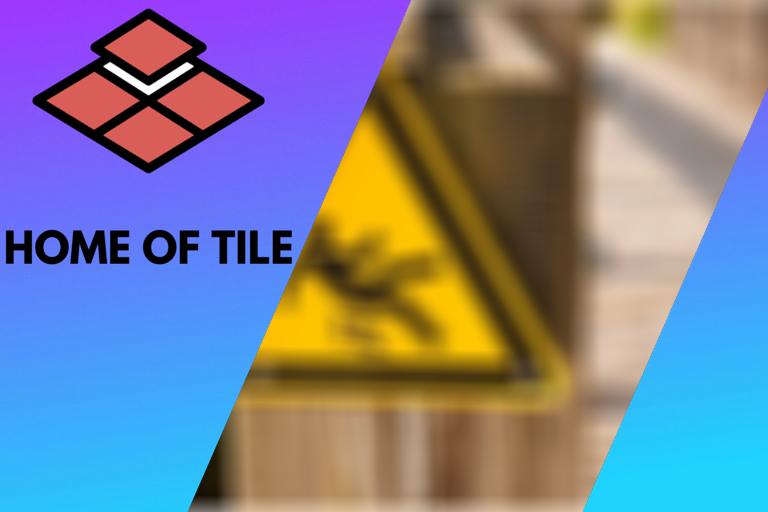How To Clean Outdoor Tiles: 5 Things You Should Know
Your outdoor tiles, especially if they’re at the front of your home, are the first thing visitors see. Dirty tiles can leave a lasting negative impression, so it’s important to know how to keep your outdoor tiles clean.

Contents
How To Clean Outdoor Tiles
The accumulation of dirt and grime can make your outdoor tiles greasy and create a slip-and-fall hazard. Cleaning them regularly prevents this build-up and reduces the chances of accidents. But you’ll need to ensure you use the best method to achieve a thorough clean.
There are several steps involved when cleaning outdoor tiles.
- Sweep away any loose dirt or grime.
- Apply a mixture of warm water and floor-cleaning agent to the tiles using a mop or scrubber.
- Use a hose to rinse down the area.
- Dry the area.
Choose your cleaning agent wisely, as many can be harsh, even caustic. Some can be too abrasive on your tiles. They may also be harmful when inhaled. There are many mild alternatives you can use to clean your outdoor tiles.
What’s the Best Method for Cleaning Outdoor Tiles?
Traditional cleaning of outdoor tiles requires two major components: a tool like a mop and a cleaning agent. However, whether you use a mop or scrubber, detergent, or bleach, there’s an easier way to clean your outdoor tiles.
The best method for cleaning outdoor tiles is pressure washing. It removes stains and eliminates the need for cleaning agents, which can be caustic and harsh on tiles.
While pressure washing can also be harsh on tiles, using a fan spray nozzle makes it gentler and preserves your tiles.
It’s best to use a fan spray nozzle attachment instead of a smaller one when pressure washing tiles. You can also reduce the pressure of the washer. A PSI of 1000 to 2000 (6895-13.790 kPa) is usually recommended for cleaning outdoor tiles.
Small attachments tend to be more forceful and are usually best for more targeted cleaning. They can be perfect for the often hard-to-reach areas — the spaces between your tiles filled with grout.
Grimy tile grout drastically changes the appearance of your tiles and makes them seem not only duller and grimier than they are, but also older.
You can pressure wash your tiles at least once every quarter. However, you should clean them between scheduled pressure washings. Simply apply an appropriate cleaning agent mixed with water. Clean the surface thoroughly then rinse with water.
This regular cleaning should be at least once a week. It’s also the best way to maintain the cleanliness of your tiles if you don’t have access to a pressure washer.
● Implements You Can Use to Clean Outdoor Tiles
Here are a few implements that can help:
- A mop
- An electric spin scrubber cleaning brush
- A handheld scrubber
If you prefer a handheld scrubbing implement, choose bristles that’ll work well with your tiles and resist the temptation to choose a scrubber with hard bristles as they may scratch your tiles. It’s also best to wear gloves especially if you believe the cleaning agent you’re using is abrasive.
Vinegar and Dawn Are Some of the Cleaning Agents You Can Use on Outdoor Tiles
The best thing about choosing a cleaning agent for your outdoor tile is you can use products that you may already have in your home. This ensures they’re not caustic or harmful to your health. Here are a few you can try.
- Vinegar and water: A mixture of warm water and a few drops of vinegar can work wonders on your tile and is especially effective on hard water deposits.
- Baking soda and water: Mixing a paste of baking soda and water will add shine to your tiles and works quite well when cleaning grout.
- Hydrogen peroxide and water: Use a cup (237 ml) of hydrogen peroxide in a gallon (3.8 L) of water. Fill a spray bottle with some of the mixture so you can apply it easily to your tiles.
- Blue dawn and vinegar: Simply mix equal parts of Blue Dawn and vinegar and add water. It’s best to use a spray bottle to apply it to the tile’s surface.
Although most of these are seemingly harmless, it’s still recommended that you do a spot test before using any of them on your tiles. You shouldn’t use vinegar on natural stone. This includes slate, marble, and concrete.
This also applies to those who believe that a surface isn’t clean unless they use bleach. If you’re one of them, use one cup of bleach for every five gallons of water. This mixture is an indication of how powerful bleach can be.
Always use bleach with caution and never mix it with other cleaning agents as it may be too harsh for certain tiles. It can stain porcelain tiles and discolor the grout.
Long-term use can also damage the surface of the tile. This is also the case with any other ammonia- or acid-based products.
Also, consider this when using any commercial tile or grout cleaner.
Cleaning Rough Outdoor Tiles
Rough or textured tiles continue to grow in popularity. They can add depth and provide contrast in any room of your home and usually create a beautiful aesthetic. This is only rivaled by the challenge cleaning them can present.
Cleaning rough outdoor tiles can be difficult. It may be hard to achieve a thorough cleaning due to the textured surface of the tile. However, using a bristled brush or mop along with a mild detergent can get to the hard-to-reach spots. You may also want to consider using a steam mop.
Using a soft cloth, although more time-consuming, can also be effective and has the advantage of being gentle on your tiles.
Remember to limit the amount of cleaning agent you use as the more you use, the harder it’ll be to remove all remnants from the tile’s rough surface. This can result in streaking or a light film developing over the tile and may give your tile a dull appearance over time.








